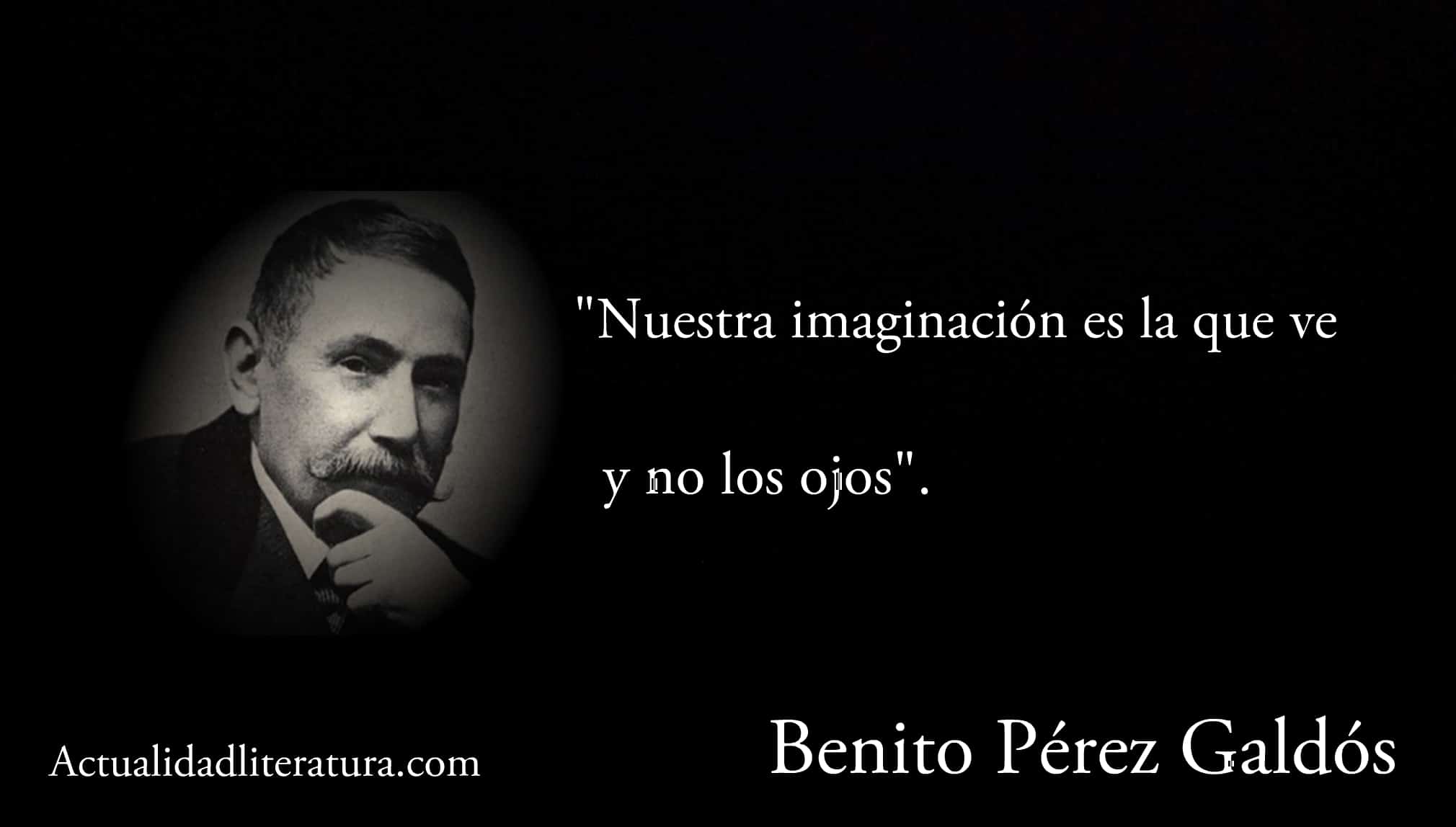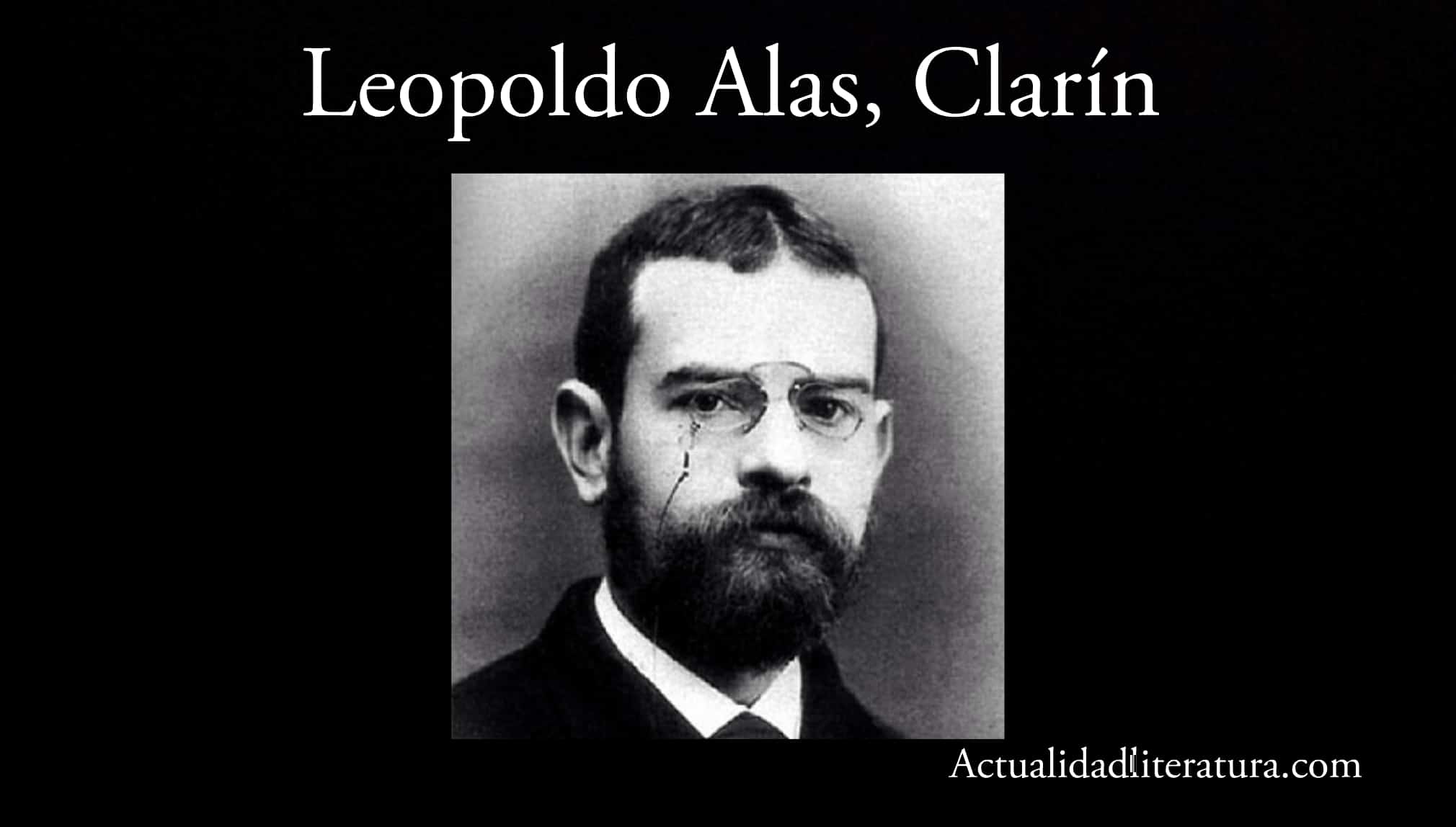
Quote by Benito Pérez Galdós.
Realism in Spain appeared during the second half of the XNUMXth century. It was an artistic movement whose aesthetic was circumscribed to (the intention of) showing reality objectively. In accordance, the realistic novels presented contents far from the omnipresent sentimentality in the writers belonging to the predecessor current, Romanticism.
And yes, the aforementioned literary trends were proposed, as well as successive, opposed. For this reason, the genesis of Realism is part of the evolution of the thematic proposals of the romantic period (especially Costumbrismo). This transition started from stories dominated by subjectivity towards narratives in which the historical and social context became more relevant.
The attribution of French Realism
Context
The noted economist Enrique Fuentes Quintana (1924 - 2007) explained in El País (1988) the reasons for the backwardness of Spain with respect to countries such as England or France after the First Industrial Revolution. Specifically, Quintana pointed to excessive tariff protectionism, the lack of agrarian reform, a captive internal market, a weak foreign sector, and state interventionism.
This situation also left the Iberian nation behind in the artistic-intellectual field. For these reasons, the avant-garde trends that emerged in Western Europe during the 1840th century manifested themselves a decade or two later in Spain. Such was the case of Realism, which emerged in France around 1850 and had an undeniable influence on Spanish literature from XNUMX.
Features of French Realism
- Artists with social and political commitment;
- Visions that sought to portray "the essence perceived before the eyes" instead of a mimetic representation of the environment;
- Decisive role of photography in plastic artists;
- Postures away from heroic, theatrical or unnatural gestures;
- Rejection of the neoclassical or romantic approach (expressed as false by realistic artists and intellectuals).
Major novelists of French Realism and some of their most emblematic works
- Stendhal (1783-1842): Red and black (1830) The Charterhouse of Parma (1839);
- Honoré de Balzac (1799 – 1850): The human comedy, Lost illusions (I, 1837; II, 1839; III, 1843);
- Gustave Flaubert (1821-1880): Mrs. Bovary (1857) Sentimental education (1869) The temptation of San Antonio (1874);
- Emile Zola (1840-1902): The bar (1877) Germinal (1885)
It should be noted that Zola is considered one of the greatest exponents of Naturalism, which, in turn, is seen as part of Realism. In this sense, The Regenta (1885) —considered the most sublime work of Leopoldo Alas Clarín— presents thematic features and a construction of characters quite influenced by the work of the authors mentioned in the previous section.
Likewise, a large part of the books by Benito Pérez Galdós —another of the “proceres” of Spanish literary Realism— evidence the indisputable influence of the Gallic realist writers. In complement, the narrative forms inherited from Costumbrismo (which coexisted with those of Romanticism) they served as a starting point for realistic writers.
Historical events that marked the origin of Realism in Spain
During the decades of 1869 and 1870, several transcendental events took place for the later identity of Spain as a nation. Many of those events they were reviewed or alluded to directly or indirectly by the best-known Iberian writers of the time. Here are the most notable events of that time:
- 1865: The revolt of the Night of San Daniel (April 10) and the uprising of the sergeants of the San Gil barracks (June 22);
- Revolution of 1868 (September 19 – 28);
- Democratic administration (September 1868 – December 1874);
- Birth and fall of the First Republic (February 1873 – January 1874);
- Bourbon restoration (1874) and promulgation of the Constitution of 1876.
The Spanish realist novel

Leopoldo Alas, Clarin.
Definition
It is the one practiced in Spain at the height of Realism as the prevailing artistic movement. Therefore, its primary purpose was to represent the environment, society and customs in a meticulous and objective way. Likewise, he essentially focused on portraying daily life and the vicissitudes of the bourgeoisie during the second half of the XNUMXth century.
Most historians point out that the attributes of the Spanish realist novel were consolidated around the year 1880. At that time, famous novelists like Juan Varela or Emilia Pardo Bazán —apart from the aforementioned Galdós and Clarín— they opted for a more crude and reliable style. Such a progressive position generated the rejection of the conservative sectors of society.
Features
- It stood as a form of expression of claim and social criticism;
- Despite being a movement closely linked to bourgeois society, the realist novel served to capture the desire for renewal and progress of the population in general;
- Clear intention to describe everyday life on the streets, without extenuating or idealistic phrases;
- Exposes the discrepancies of politicians, the moral crisis of the clergy, the falsity of society, interpersonal relationships and people's materialism;
- Construction of characters with the psychological profile, the physical and the attitudes of a common person, with their respective defects and contradictions. Nothing to do with the idealized heroes and protagonists of romantic writers;
- The narrator knows every detail regarding the protagonists: past, traumas, present, thoughts and dreams. They are frequently affected by the environment in which they live and, therefore, they are usually prone to ignominy and failure;
- The authors confer greater relevance to female figures and to communities above individual assessments;
- The impartial chronicle becomes very important;
- Writers get in the habit of researching and documenting in order to elaborate a narrative as close as possible to reality;
- The narrator presents the events as a witness, without accommodating his point of view and with a distant perspective;
- Parallel to the omniscient character of the narrator, the narrative thread manifests the irony of some situations and seeks to guide the reader in some (about the importance of some events and/or characters, for example);
- Dialogues defined by intensity;
- Use of precise language, devoid of rhetoric and appropriate to the culture of each character, therefore, is no stranger to vulgar expressions when the context requires it, along with colloquialisms, foreign words and idioms;
- Linear narrative structure, with a well-defined beginning and end, where time jumps occur rarely (or not at all). Although there is an exception: the use of analepsis to contribute to the understanding of a present circumstance;
- Diffusion of the so-called thesis novels, in which, the writer argues the prevalence of his ideas with respect to a subject of collective domain.
- The realist writers always tried not to miss any detail in the landscape and interior settings (decoration, architecture, aesthetics and proportions of space, among others). The same thing happened with the characters: gestures, body language, moods, expressiveness...
Emblematic novelists of Spanish literary realism and their most outstanding works

Quote by Juan Valera
- Juan Valera (1824 – 1905): Pepita Jimenez () Juanita the Long ();
- Benito Pérez Galdós (1843 - 1920): Perfect lady (1876) Fortunata and Jacinta (1886-87), The National Episodes (series of 48 volumes);
- Emilia Pardo Bazán (1851 - 1921): The rostrum (1883) The pazos de Ulloa (1886-87), Tales of Marineda (1892);
- Leopoldo Alas – Clarín (1852 – 1901): The Regenta (1884-85), Small talk (1894) Goodbye Lamb (short novel);
- Vicente Blasco Ibáñez (1867 – 1928): The barrack (1898) Cathedral (1903) The four horsemen of the apocalypse (1916)
Very good note, very complete and carried out with a didactic spirit to thank. Congratulations on the job. Greetings.